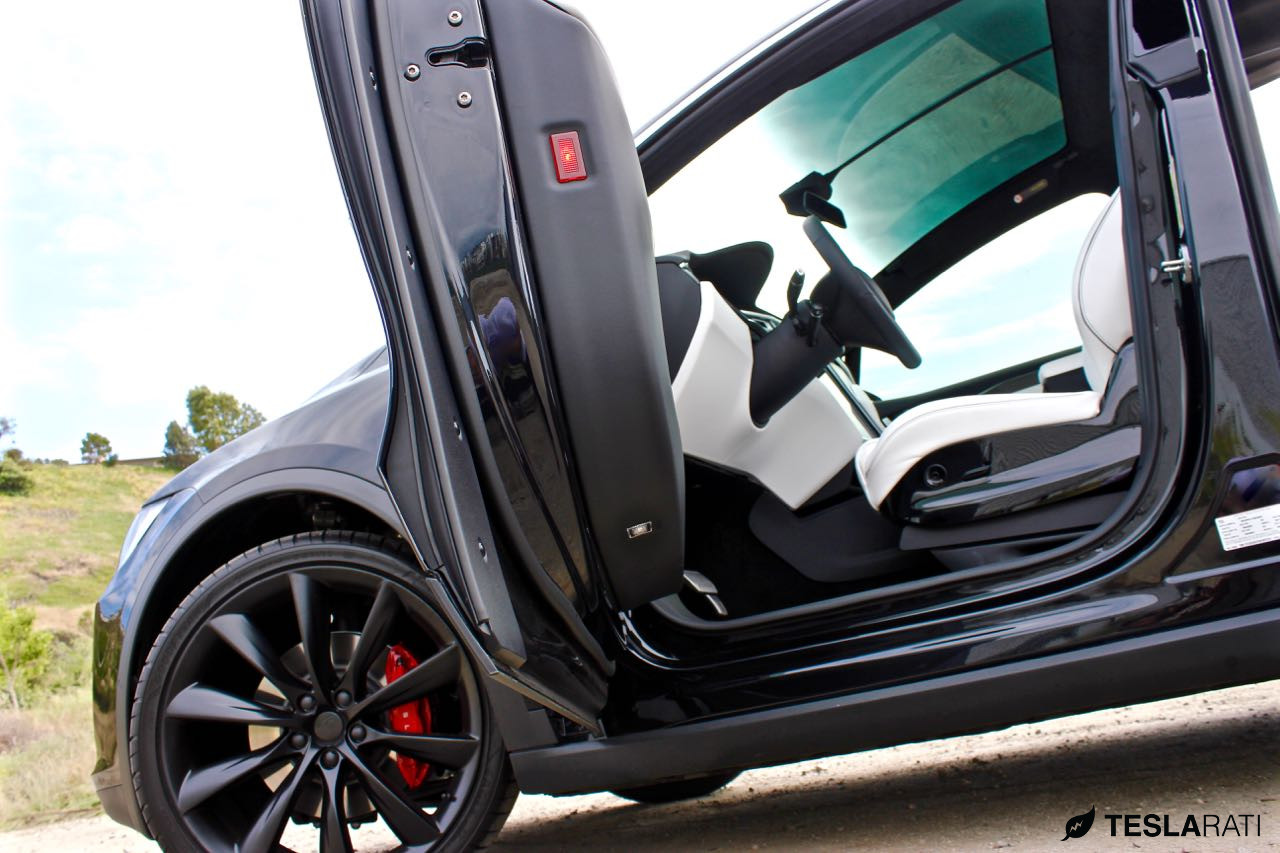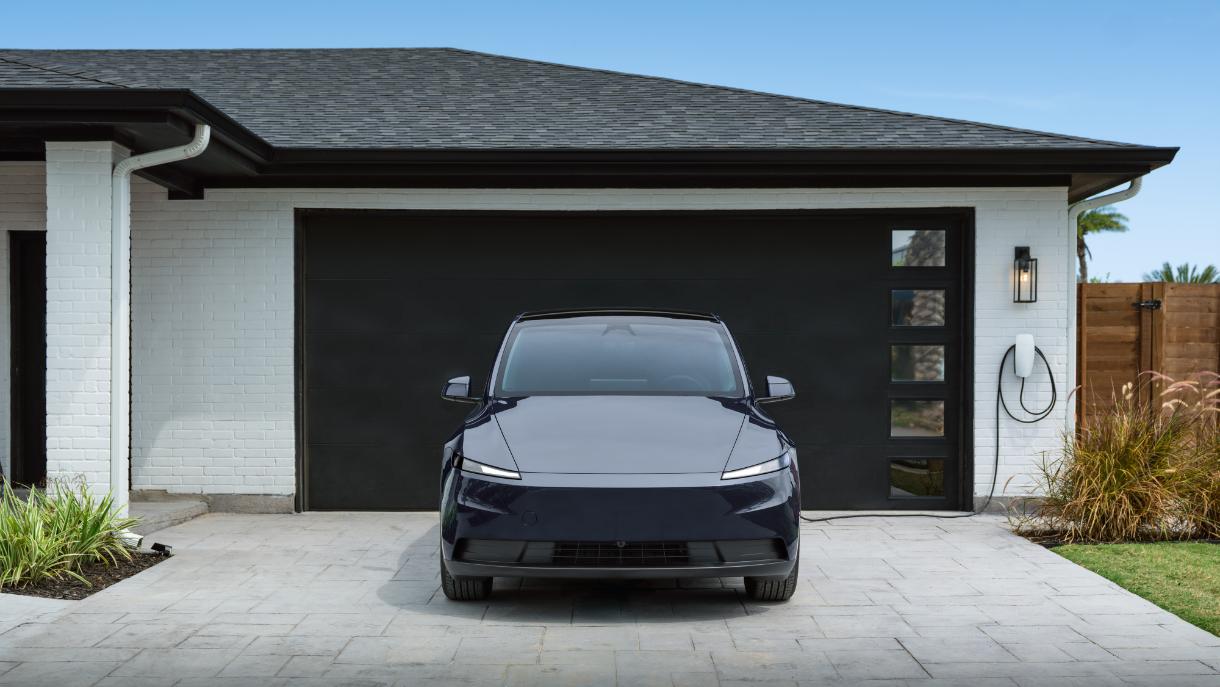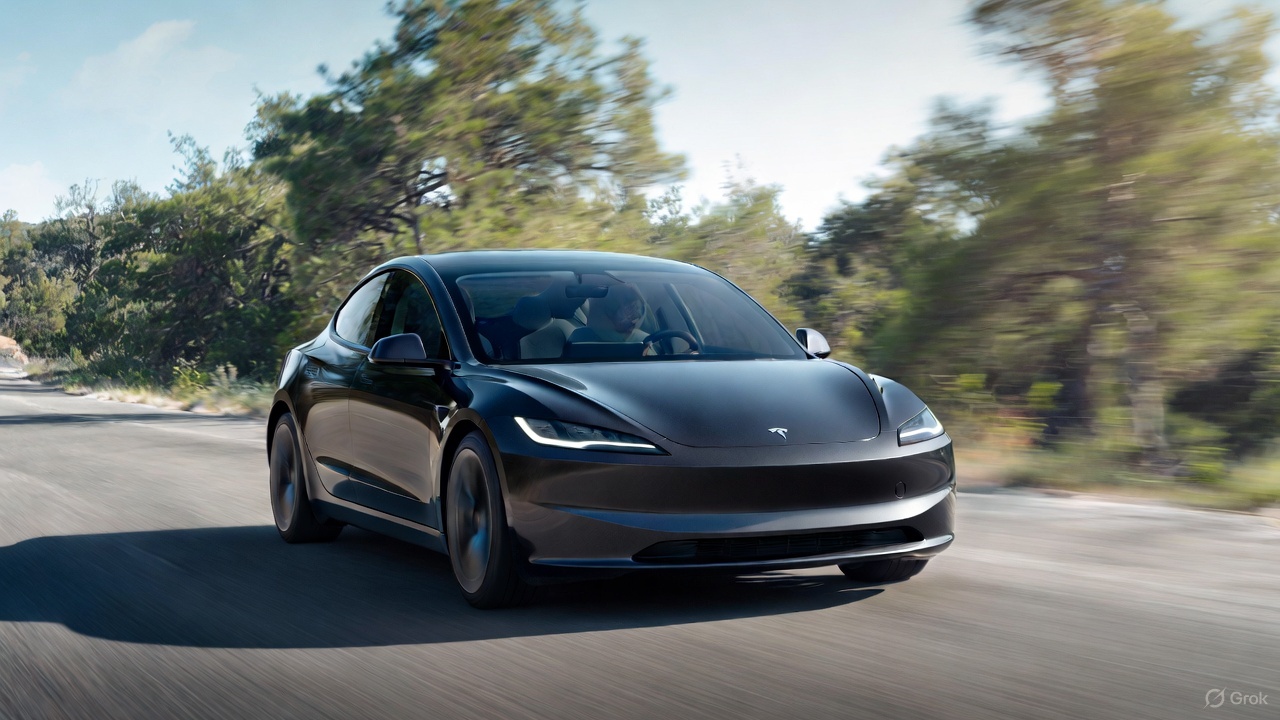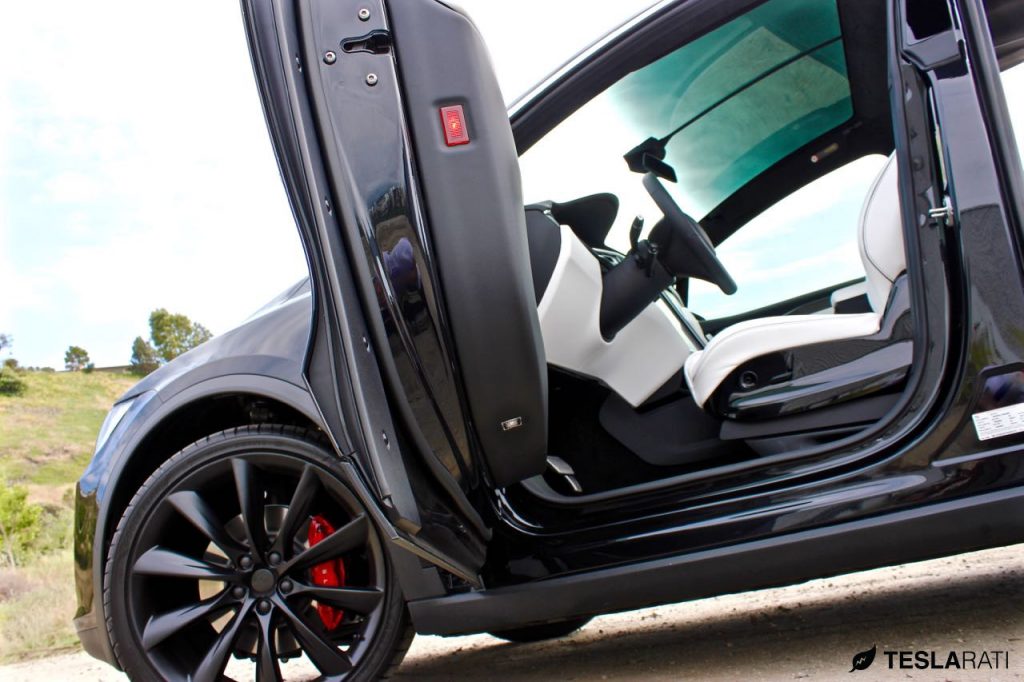News
Tesla Model X owner files for Lemon Law protection claiming unfixable defects

The first Lemon Law suit that we know of has been filed by a California man over the claim that his $162,000 Tesla Model X exhibits ‘weird’ behavior and is dangerous to drive.
Model X owner Barrett Lyon filed suit at Placer County Court in Roseville, CA claiming that the vehicle’s electronically actuated doors have slammed shut on his leg as well as damaged property as a result of its behavior. According to the Courthouse News Service (CNS), Lyon said “The doors do some weird, wicked things. If you get in and slide sideways and accidentally tap the brake, the driver’s side door slams shut on your leg. That’s not a very nice thing to have happen to you.”
Tesla Model X self-presenting front doors
The doors he’s referring to isn’t the Model X’s unique dual-hinged falcon wing doors that open out and upwards. Rather, Lyon is claiming that the vehicle’s sophisticated self-presenting and auto-closing front doors have swung open in their garage resulting in damage to the door and other property.
Among other issues being cited in the Lemon Law suit are (quoting Lyon via CNS):
- “Auto Pilot in the rain is extremely dangerous, it causes the car to swerve into different lanes.”
- “Powered front doors are opening into cars and other obstacles.”
- “The power door slams are a feature of the Model X, and cannot be disabled”
- “The touch screen freezes repeatedly, the second row seat causes driver’s seat to fold forward, and the auto park feature does not work 90 percent of the time,”
What’s interesting about this case is that Lyon would appear to be a long time supporter of Tesla being an owner to a Roadster as well as a Model S which he states have not given him any troubles. The Model X on the other hand has been a disappointment and thus remains undriven. “It’s parked. We don’t drive it. It’s basically a really fancy car decoration.”, says Lyon.
Lyon’s suit wouldn’t be the first time Tesla was faced with a Lemon Law challenge. Back in early 2014, the self-proclaimed “Lemon Law King” represented a Model S owner who claimed his newly bought vehicle at the time was out of service for a total of 66 days shortly after his March 2013 purchase due to alleged defects which prevented the vehicle from turning on and driving. Tesla quickly fired back releasing a statement on their blog defending their position, but also questioning the true motives behind the suit.
This new Lemon lawsuit brought on by Lyon and represented by San Francisco based law firm Anderson, Ogilvie & Brewer could have some merit especially with more widespread reports of the over-engineered “Best car ever” facing quality issues. Tesla CEO Elon Musk continues to reassure potential buyers that the company has increased its quality checks. Musk has gone as far as saying that he personally checks vehicles for quality and has set up a sleeping bag at the end of the production line where he sleeps.
Lyon seeks a refund on the purchase of the vehicle including registration fees. He also seeks damages for breach of warranty and lawyer fees.
Below is a copy of what the California Office of Attorney General defines as the Lemon Law.
California “Lemon Law”: A special provision, often called the “Lemon Law,” helps determine what is a reasonable number of repair attempts for problems that substantially impair the use, value, or safety of the vehicle. The “Lemon Law” applies to these problems if they arise during the first 18 months after the consumer received delivery of the vehicle or within the first 18,000 miles on the odometer, whichever occurs first. During the first 18 months or 18,000 miles, the “Lemon Law” presumes that a manufacturer has had a reasonable number of attempts to repair the vehicle if either (1) the same problem results in a condition that is likely to cause death or serious bodily injury if the vehicle is driven and the problem has been subject to repair two or more times by the manufacturer or its agents, and the buyer or lessee has at least once directly notified the manufacturer of the need for the repair of the problem as provided in the warranty or owner’s manual or (2) the same problem has been subject to repair four or more times by the manufacturer or its agents and the buyer has at least once directly notified the manufacturer of the need for the repair of the problem as provided in the warranty or owner’s manual or (3) the vehicle is out of service because of the repair of any number of problems by the manufacturer or its agents for a cumulative total of more than 30 days since delivery of the vehicle.

News
SpaceX shades airline for seeking contract with Amazon’s Starlink rival

SpaceX employees, including its CEO Elon Musk, shaded American Airlines on social media this past weekend due to the company’s reported talks with Amazon’s Starlink rival, Leo.
Starlink has been adopted by several airlines, including United Airlines, Qatar Airways, Hawaiian Airlines, WestJet, Air France, airBaltic, and others. It has gained notoriety as an extremely solid, dependable, and reliable option for airline travel, as traditional options frequently cause users to lose connection to the internet.
Many airlines have made the switch, while others continue to mull the options available to them. American Airlines is one of them.
A report from Bloomberg indicates the airline is thinking of going with a Starlink rival owned by Amazon, called Leo. It was previously referred to as Project Kuiper.
American CEO Robert Isom said (via Bloomberg):
“While there’s Starlink, there are other low-Earth-orbit satellite opportunities that we can look at. We’re making sure that American is going to have what our customers need.”
Isom also said American has been in touch with Amazon about installing Leo on its aircraft, but he would not reveal the status of any discussions with the company.
The report caught the attention of Michael Nicolls, the Vice President of Starlink Engineering at SpaceX, who said:
“Only fly on airlines with good connectivity… and only one source of good connectivity at the moment…”
CEO Elon Musk replied to Nicolls by stating that American Airlines risks losing “a lot of customers if their connectivity solution fails.”
American Airlines will lose a lot of customers if their connectivity solution fails
— Elon Musk (@elonmusk) December 14, 2025
There are over 8,000 Starlink satellites in orbit currently, offering internet coverage in over 150 countries and territories globally. SpaceX expands its array of satellites nearly every week with launches from California and Florida, aiming to offer internet access to everyone across the globe.
Currently, the company is focusing on expanding into new markets, such as Africa and Asia.
News
Tesla Model Y Standard stuns in new range test, besting its Premium siblings
Tesla’s newer vehicles have continued to meet or exceed their EPA estimates. This is a drastic change, as every 2018-2023 model year Tesla that Edmunds assessed did not meet its range estimates.

The Tesla Model Y Standard stunned in a new range test performed by automotive media outlet Edmunds, besting all of its Premium siblings that are more expensive and more luxurious in terms of features.
Testing showed the Model Y Standard exceeded its EPA-estimated range rating of 321 miles, as Edmunds said it is the “longest-range Model Y that we’ve ever put on our loop.” In the past, some vehicles have come up short in comparison with EPA ranges; for example, the Model Y’s previous generation vehicle had an EPA-estimated range of 330 miles, but only drove 310.
Additionally, the Launch Series Model Y, the first configuration to be built in the “Juniper” program, landed perfectly on the EPA’s range estimates at 327 miles.
It was also more efficient than Premium offerings, as it utilized just 22.8 kWh to go 100 miles. The Launch Series used 26.8 kWh to travel the same distance.
It is tested using Edmunds’ traditional EV range testing procedure, which follows a strict route of 60 percent city and 40 percent highway driving. The average speed throughout the trip is 40 MPH, and the car is required to stay within 5 MPH of all posted speed limits.
Each car is also put in its most efficient drive setting, and the climate is kept on auto at 72 degrees.
“All of this most accurately represents the real-world driving that owners do day to day,” the publication says.
With this procedure, testing is as consistent as it can get. Of course, there are other factors, like temperature and traffic density. However, one thing is important to note: Tesla’s newer vehicles have continued to meet or exceed their EPA estimates. This is a drastic change, as every 2018-2023 model year Tesla that Edmunds assessed did not meet its range estimates.
Tesla Model Y Standard vs. Tesla Model Y Premium
Tesla’s two Model Y levels both offer a great option for whichever fits your budget. However, when you sit in both cars, you will notice distinct differences between them.
The Premium definitely has a more luxurious feel, while the Standard is stripped of many of the more premium features, like Vegan Leather Interior, acoustic-lined glass, and a better sound system.
You can read our full review of the Model Y Standard below:
Tesla Model Y Standard Full Review: Is it worth the lower price?
News
Xpeng CEO: Tesla FSD 14.2 has developed “near-Level 4” performance
While acknowledging that imperfections remain, the Xpeng CEO said FSD’s current iteration significantly surpasses last year’s capabilities.

Xpeng CEO He Xiaopeng has offered fresh praise for Tesla’s Full Self-Driving (FSD) system after revisiting Silicon Valley more than a year after his first hands-on experience.
Following extended test drives of Tesla vehicles running the latest FSD software, He stated that the system has made major strides, reinforcing his view that Tesla’s approach to autonomy is indeed the proper path towards autonomy.
Tesla FSD closing in on Level 4 driving
During his visit, He test-drove a Tesla equipped with FSD V14.2. He also rode in a Tesla Robotaxi. Over roughly five hours of driving across Silicon Valley and San Francisco, He said both vehicles delivered consistent and reassuring performance, a notable improvement from his experience a year earlier.
According to He, Tesla’s FSD has evolved from a smooth Level 2 advanced driver assistance system into what he described as a “near-Level 4” experience in terms of capabilities. While acknowledging that imperfections remain, the Xpeng CEO said FSD’s current iteration significantly surpasses last year’s capabilities. He also reiterated his belief that Tesla’s strategy of using the same autonomous software and hardware architecture across private vehicles and robotaxis is the right long-term approach, allowing users to bypass intermediate autonomy stages and move closer to Level 4 functionality.
He previously tested Tesla’s FSD V12.3.6 and Waymo vehicles in California in mid-2024, noting at the time that Waymo performed better in dense urban environments like San Francisco, while Tesla excelled in Silicon Valley and on highways.
Xpeng’s ambitious autonomy roadmap and internal challenge
The Silicon Valley visit also served as a benchmark for Xpeng’s own autonomy ambitions. He stated that Xpeng is looking to improve its VLA autonomous driving system to match the performance of Tesla’s FSD V14.2 within China by August 30, 2026. Xpeng is poised to release its VLA 2.0 smart driving software next quarter, though He cautioned that the initial version will not be able to match FSD V14.2’s capabilities, as noted in a CNEV Post report.
He also added a personal twist to the goal, publicly challenging Xpeng’s autonomous driving team. If the performance target is met by the 2026 deadline, the CEO stated that he will approve the creation of a Chinese-style cafeteria for Xpeng’s Silicon Valley team. If not, Liu Xianming, head of Xpeng’s autonomous driving unit, has pledged to run naked across the Golden Gate Bridge, He noted.









